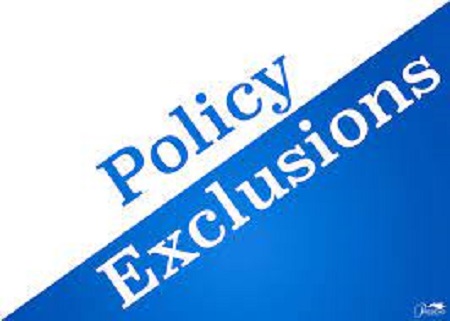Introduction
Insurance is often seen as a safety net, a shield against unexpected and unwarranted financial burdens. However, the fine print of insurance policies can be a maze of exclusions, exceptions, and limitations that can leave policyholders bewildered when it comes time to make a claim. Understanding policy exclusions is crucial for ensuring that you are adequately covered in times of need. In this blog post, we will delve into the intricacies of insurance policy exclusions, shedding light on what your insurance may not cover.
The Basics of Insurance Coverage
Before we dive into policy exclusions, it’s important to establish a basic understanding of how insurance works. Fundamentally, Insurance Stands as a pact between the policyholder and the insuring entity. In exchange for regular premium payments, the insurance company agrees to provide financial protection against specific risks or events outlined in the policy.
Common Types of Insurance and Their Coverage
There are various types of insurance, each designed to protect against specific risks. Among the widely known insurance are Health Plans, Auto Policies, Homeowners/Renters Coverage, and Life Assurance. Each policy has its own set of inclusions and exclusions, which policyholders must be aware of to make informed decisions.
A Deep Dive into Policy Exclusions-
While insurance policies provide a sense of security, it is equally important to understand what they do not cover. Policy exclusions are conditions or circumstances specified in the insurance contract that the insurer will not cover. These exclusions can vary widely depending on the type of insurance and the specific policy.
1. Intentional Acts and Criminal Behavior
Most insurance policies exclude coverage for losses resulting from intentional acts or criminal behavior. This means that if you intentionally cause harm to yourself or others, or engage in illegal activities, your insurance is unlikely to cover the resulting damages.
2. Acts of War and Terrorism
Many insurance policies exclude coverage for damages caused by acts of war or terrorism. While some policies may offer optional coverage for these events, it’s crucial to understand the default exclusions and make informed decisions about additional coverage.
3. Wear and Tear, Gradual Damage, and Maintenance Issues
Insurance policies are typically crafted to shield against unforeseen and abrupt occurrences that can throw life off balance. As a result, most policies exclude coverage for wear and tear, gradual damage, and maintenance-related issues. For example, homeowners insurance may not cover damage caused by a leaky roof if it’s deemed to be the result of poor maintenance.
4. Pre-existing Conditions in Health Insurance
The exclusion of coverage for pre-existing medical conditions can be a significant concern when seeking health insurance. It’s essential to carefully review the terms of your health insurance policy to understand how pre-existing conditions are defined and whether any waiting periods apply.
5. Excluded Perils in Property Insurance
Property insurance, whether for homes or businesses, typically includes a list of perils that are covered and those that are excluded. Common exclusions may include damage from floods, earthquakes, and certain natural disasters. Additional coverage, such as flood insurance, may be necessary to fill these gaps.
6. Risky Activities and Hobbies
Engaging in certain high-risk activities or hobbies may lead to exclusions in your insurance coverage. For example, if you participate in extreme sports or operate a business with inherent risks, your insurance policy may exclude coverage for related incidents.
7. Exclusions in Life Insurance
Life insurance policies often have specific exclusions, such as suicide within a certain period after the policy is initiated. Understanding these exclusions is crucial for beneficiaries to navigate the claims process effectively.
Mitigating Risk and Addressing Exclusions
While policy exclusions are inherent in insurance contracts, there are steps you can take to mitigate risks and address potential coverage gaps –
1. Read and Understand Your Policy
Take the Time to Digest and Fully Understand Your Insurance Policy’s Terms and Conditions
If there are terms you find unclear, don’t hesitate to seek clarification from your insurance provider.
2. Ask Questions
Before purchasing a policy, ask your insurance agent or broker about specific exclusions. Knowing what is not covered is just as important as understanding what is covered.
3. Consider Additional Coverage
Evaluate whether additional coverage or riders are necessary to fill potential gaps. For example, if you live in an area prone to earthquakes, consider adding earthquake coverage to your homeowner’s insurance.
4. Regularly Review Your Policy
As life’s path unfolds, bringing shifts in circumstances and risks along the way. Consistently evaluate your insurance coverage to verify its relevance to your current requirements.
5. Seek Professional Advice
If you need clarification on the policy language or need assistance in understanding the implications of exclusions, consult with an insurance professional or legal advisor.
Conclusion
Insurance is a valuable tool for managing risk, but it’s essential to approach it with a clear understanding of its limitations. Policy exclusions define the boundaries of coverage, outlining scenarios and events that insurance providers will not pay for. By educating yourself about these exclusions and taking proactive steps to address potential gaps in coverage, you can make informed decisions that better protect your financial well-being. Remember, an informed policyholder is an empowered one.

